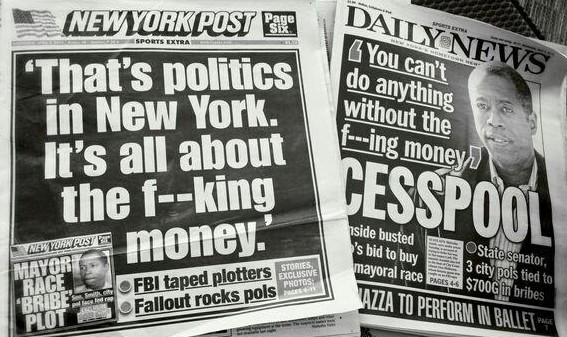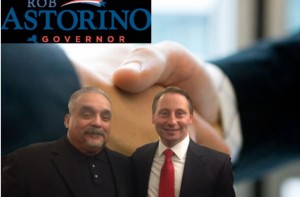By E.J. McMahon Oct 7, 2014 – New York Post
On Election Day, New York voters will be asked to let the state borrow up to $2 billion to help public schools buy computer hardware they don’t urgently need and create space for pre-kindergarten programs that most districts outside New York City can’t afford.
Specifically, Proposal 3 on the Nov. 4 ballot would authorize a state general — obligation — bond issue to finance new interactive “smart boards,” servers, laptops, desktop computers and iPad-style tablets; “high-tech security features” such as surveillance cameras; and broadband Internet and wireless connections.
Districts could also apply for bond funding to “construct, enhance and modernize educational facilities” for pre-K and to replace any temporary “transportable classroom units.”
The ballot language is laced with marketing spin, from the title, “Smart Schools Bond Act of 2014,” to highly dubious promises that the $2 billion will “equalize opportunities for children to learn” and lead to “high-quality” pre-K programs.
Ignore the spin. Even New Yorkers inclined to write a blank check for education should think long and hard before they say “yes” to Prop 3.
To start with, New York’s state and local debt burden is already enormous, totaling more than $17,000 per resident.
Passage of this bond proposition would push the state government closer to its statutory debt ceiling — even as Albany struggles to fill funding gaps in long-term capital plans for basic infrastructure like mass transit, roads and bridges.
And while bridges and subways undeniably are long-term investments, buying computers would be a wasteful use of the state’s increasingly scarce capital-bonding capacity.
To justify bonding, the law implementing Proposal 3 assumes that classroom technology financed with school-bond funds will have a “probable life” of eight years.
In fact, that’s at least three years beyond the life span generally assumed by large corporate and government institutions.
And even under that unlikely assumption, most of the nifty smart boards, iPads, laptops and other devices purchased under the bond act will be worn out or obsolete long before the debt is paid off — even if the bonds are issued for relatively short average durations of 10 to 15 years.
New York has already found a much better way to subsidize classroom technology and school construction: through annual budget appropriations.
Constructing new classrooms has long been underwritten by Albany’s generous school building-aid program, which this year alone will provide $2.7 billion to underwrite up to 95 percent of eligible capital costs in districts across the state.
And, under New York’s post-Newtown SAFE Act, building aid also can now be spent to improve school security.
Over the past five years, Albany has earmarked $192 million in computer-hardware aid for schools, including $38 million in the current budget. Has it been enough?
As of December, the state Board of Regents seemed to think so: In their request for a total hike of $1 billion in state education spending, the Regents sought only $1 million more for computer aid.
Most striking is that none of New York’s many public-school-advocacy groups, from school boards to teachers unions, had identified classroom technology as a funding priority before the “smart schools” bond scheme first popped up, seemingly out of nowhere, in Gov. Cuomo’s State of the State speech in January.
The one district most likely to tap its full allocation under the proposed bond act is New York City, which could reap $780 million to expand classroom space for Mayor de Blasio’s universal pre-K program.
This would be on top of the added annual state aid the governor provided to finance de Blasio’s pre-K launch without a city tax hike.
But universal pre-k is not a priority in most other Empire State school districts. They’re having a hard enough time keeping their existing K-12 spending beneath the state property-tax-cap, even as enrollments drop.
The annual payments on $2 billion in bonds could ultimately come to more than $130 million a year. A far better way to “equalize opportunities to learn” would be to spend that money on added annual aid to public and charter schools serving the state’s neediest children.
E.J. McMahon is president of the Empire Center for Public Policy and a Manhattan Institute senior fellow.

